Guides for Beginning Specialty Crop Growers
This series of Grower Guides for beginning specialty crop growers offers resources for beginning farmers focused on organic and sustainable production practices, small-scale diverse systems for direct marketing, and production efficiencies to help small-scale producers develop economically and environmentally sustainable operations. The guide was funded by a California Department of Food and Agriculture (CDFA) grant through the Specialty Crop Block Grant of the U.S. Department of Agriculture (USDA).
All ten of the grower guides have been translated into Spanish and are available for free download. The Spanish translation of the guides was funded by the Nell Newman Foundation, Organic Valley/CROPP, and CDFA.
Click on the .PDF download links below to access the individual Grower Guides. Supplemental videos are included at the end of the page.

Growing your own organic seedlings offers many advantages, including control over varieties, quantities, and timing. This grower guide describes how to efficiently and effectively grow vegetable and flower seedlings for organic operations using environmentally responsible practices.
Organic and Sustainable Seedling Production Grower Guide PDF »
Preventing and Managing Seedling Pests and Diseases supplemental PDF »
Seedling Container Comparison Chart supplemental PDF »
Organic Seedling Production webinar »
Fresh market round and flat pod bush beans can be a productive and profitable market crop, as well as a beneficial rotational crop in diverse, small- to medium-scale, mixed specialty crop systems in California. This guide describes the steps involved in growing bush beans organically with a focus on planting to moisture for weed control, and reviews options for planters to use at various scales.

Cut flowers have become a popular crop for small- and medium-scale mixed organic production farms. They can diversify and increase your income stream and offer an attractive option that draws consumers to your farmers’ market stall or farmstand. This grower guide provides examples of how to select and grow cut flowers, with a focus on crop planning and selection, harvest efficiencies, equipment needs, and market bouquets.
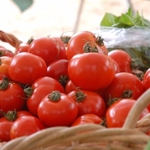
Where appropriate climate and soil conditions exist, growing dry-farmed tomatoes can be a good option for specialty crops growers. Dry farming generates an intensely flavored crop much prized by consumers and retailers. This guide describes the steps involved in growing dry-farmed tomatoes organically on the Central Coast of California, with a focus on proper soil preparation, planting, and weed control.
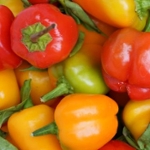
Peppers are an excellent addition to most small-scale, organic mixed cropping systems that focus on local sales. Peppers are highly productive, and will reliably produce fruit from July through October without season extension technologies (such as hoop houses). They are relatively easy to grow and harvest, and provide multiple marketing and culinary options. This grower guide addresses the basic production steps in growing peppers organically in California’s Central Coast region and provides a varieties’ overview for those interested in adding peppers to their specialty crops.
Pepper Grower Guide PDF »
Organic Pepper Production: Soil Preparation to Harvest video »

Potatoes can be a good addition to a small-scale, mixed specialty crop system. With access to the proper tools for mechanized weed management, hilling, and harvest, they are relatively easy to grow, and the Central Coast’s climate is ideal for potato production. Yields can reach an impressive 10 tons per acre. This guide describes the steps involved in growing potatoes organically, reviews equipment needs, and provides information on “new” and “creamer” potato growth habits and recommended varieties.
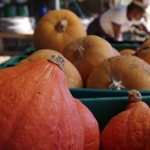
Winter squash production can be done with low capital investment and simple infrastructure. Squash has low seed cost, modest fertility needs, and relatively little labor requirements during the growing season. The broad leaf canopy minimizes weed pressure, and many varieties are fairly resistant to pests and diseases. This guide addresses the steps involved in growing winter squash organically on the Central Coast of California, with a focus on planting to moisture to minimize weed pressure.
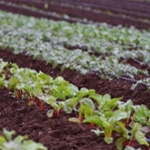
Crop diversity on small-scale farms is key to direct marketing strategies such as Community Supported Agriculture (CSA), farmers’ markets, farm stands, and restaurant accounts. However, managing a diverse cropping system requires significant experience and planning for the farm operation to be productive, competitive, and financially viable. This guide focuses on producing mixed blocks of 30- to 60-day, direct sown and transplanted crops suitable for CSA and direct market sales, with the goal of improving cropping system efficiencies and economic viability.
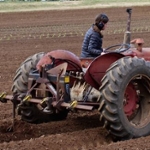
Understanding tillage sequences is critical for good soil and bed preparation prior to spring planting. Ill-timed or poorly executed tillage will lead to frustration and soil cloddiness. This grower guide describes two examples of common tillage and bed formation sequences used on California’s Central Coast. One uses a mechanical spader to incorporate cover crop residue, the second an offset disc. It also describes the process of planting to moisture in order to optimize weed management.

This brief guide to organic pest and disease management reviews general management strategies, then describes options for reducing the occurrence and impacts of the most common pests and diseases affecting dry-farmed tomatoes, potatoes, winter squash, peppers, and bush beans on California’s Central Coast. Much of the information provided is based on the UC IPM website (ucipm.edu).
Pest and Disease Managment PDF »
PowerPoints (pdf format) » Part 1, Part 2, Part 3These videos address bed preparation and weed control topics addressed in the Grower Guides. Additional "how-to" videos are also posted on the Center for Agroecology YouTube channel.
Cover Crop Incorporation, Compost Application, and Spading video »
Organic Weed Management video »
